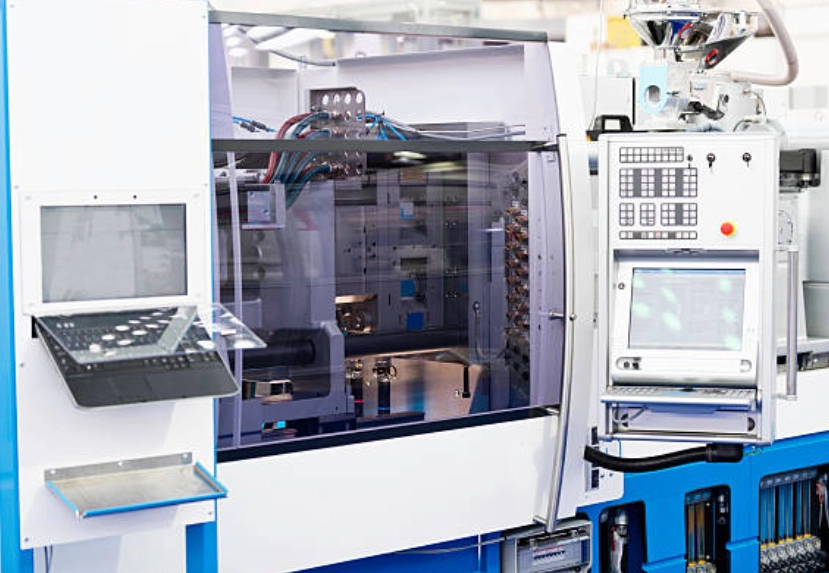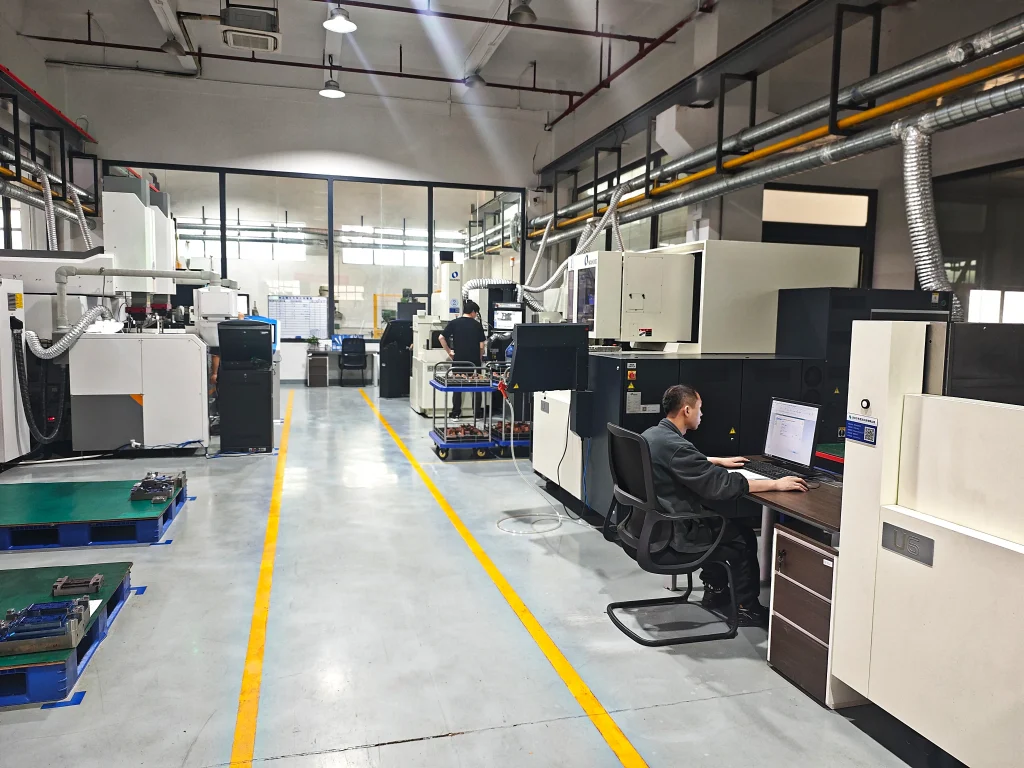What Is an Injection Molding Machine
A plastic injection molding machine is the key tool for injection molding. It changes raw plastic pellets into many different products. This amazing piece of modern technology combines heat and pressure. It shapes plastics into forms ranging from simple bottle tops to complex car parts. The heart of the injection molding machine is its ability to produce items in large quantities with great accuracy, consistency, and speed. The machine heats plastic material until it melts. It injects the liquid into a carefully designed mold. Then, it cools the material to harden into the desired shape. These machines are essential in modern factories. They make countless everyday items quickly and precisely.

When Was the First Injection Molding Machine Invented
The first injection molding machine was created in 1872. This was a major milestone in manufacturing history. John Wesley Hyatt invented it. His work changed how billiard balls were made. It opened the door for many plastic products to come. This invention showed plastic’s flexibility as a material. It also set the groundwork for technology that has grown over time. Today’s advanced injection molding machines build on this early breakthrough.
How Does an Injection Molding Machine Work

Exploring how a plastic injection molding machine works reveals a mix of technology and precision. The process starts by loading raw plastic pellets into a hopper. These pellets move to the machine’s barrel. There, they face strong heat. This heat turns the pellets into a thick liquid ready for shaping.
A screw or plunger pushes the melted plastic forward through the injection unit. This step builds pressure. It prepares the material for exact injection into a mold cavity. The mold is crafted with fine details. These details shape the final product. Injecting the melted plastic with precision is crucial. It ensures the material fills every part of the mold. It reaches all corners to match the mold’s detailed designs.
After filling, cooling channels in or around the mold speed up hardening of the liquid material. Cooling time is carefully planned. It ensures the material sets properly. The product gains strength, toughness, and a pleasing look. Once hardened, ejector systems push the finished item out of the mold cavity. This cycle—melting, injecting, cooling, and ejecting—repeats over and over for mass production.
What Are the Components of an Injection Molding Machine
To understand how a plastic injection molding machine works, knowing its parts is important. The machine has several main components:
Injection Unit
- Hopper: The starting point for plastic pellets. These are the raw materials for injection molding. The process begins here.
- Barrel: A heated area where pellets melt. Heating bands work with the barrel to keep the melt at the right temperature.
- Heating Bands: Supply heat around the barrel.
- Screw: Mixes melted plastic for evenness. It also injects the liquid into molds under pressure.
- Nozzle: Delivers melted plastic precisely into molds.
Clamping Unit
- Mold: A custom-made part that forms melted plastic into the desired item.
- Clamping System: Holds mold halves together during injection and cooling.
- Ejector System: Pushes cooled products out of molds after hardening.
Control System
- Control Panel: Acts as the machine’s brain. Operators adjust settings like temperature and pressure here.
Hydraulic System
- Pumps & Motors: Create power for machine operations.
- Valves & Hoses: Control hydraulic fluid flow. This ensures precise movements.
Cooling System
- Cooling Channels: Move coolant through molds. This speeds up hardening.
Safety Features
- Safety Gates: Block access to the machine during operation.
- Emergency Stop Buttons: Allow quick shutdowns if problems arise.
Each part works together smoothly. This transforms raw materials into finished goods. The items match exact specifications set by manufacturers.
What Are the Main Types of Injection Molding Machines

Injection molding machines come in several types. Each has a unique mechanism and use. They meet specific manufacturing needs and preferences. From hydraulic to electric, these machines offer varied solutions for different factory settings.
Hydraulic Injection Molding Machines
Hydraulic injection molding machines run on hydraulic fluid. They are known for their strength and ability to apply high clamping force. These machines have been a standard in the industry for years. They are reliable and sturdy.
Advantages:
- High clamping force. Perfect for large and complex parts.
- Tough build ensures a solid return on investment.
Disadvantages:
- Uses more energy than newer technologies.
- Slower cycles can reduce production speed.
Electric Injection Molding Machines
Electric injection molding machines are a big advance in technology. They use electric servo motors for all movements. This gives precise control and major energy savings.
Advantages:
- Energy saving. Cuts operating costs significantly.
- Faster cycles boost production capacity.
- High precision ensures steady product quality.
Disadvantages:
- Higher upfront cost compared to hydraulic machines.
- May lack the clamping force for very large parts.
Hybrid Injection Molding Machines
Hybrid injection molding machines blend the best of hydraulic and electric models. They balance performance, energy savings, and cost.
Advantages:
- Better energy savings than fully hydraulic machines.
- Works for many tasks with quick cycles.
Disadvantages:
- Higher initial costs than purely hydraulic systems.
- Upkeep can be complex due to mixed technologies.
Specialized Injection Molding Machines
Specialized injection molding machines are built for specific tasks. These include multi-material molding or micro-molding. They serve niche markets with unique needs.
Advantages:
- Custom designs allow complex parts with special materials.
Disadvantages:
- Limited use for general molding projects.
- Higher costs due to specialized tech.
How to Choose the Right Injection Molding Machine for Your Project

Picking the right injection molding machine is vital. Several factors guide this choice:
Molding Machine Specifications and Model
Check the machine’s specs. Ensure they match project needs. Consider clamping force, injection pressure, and shot size. These depend on part size and material traits.
The Mold’s Dimensions
Confirm mold dimensions fit the machine’s platen size and tie bar spacing. This prevents inefficiencies or limits during production.
Injection Rate
A fast injection rate is key for thin-walled products or quick-hardening materials. This ensures the mold cavity fills completely before cooling starts.
Capacity Availability
Verify the machine’s capacity matches planned production volumes. Overloading causes frequent downtime or faster wear on parts.
Cycle Timing
Quicker cycle times improve productivity in high-volume projects. Check how efficiently the machine completes cycles. Quality must stay high.
Core Pullers
For complex molds with movable parts, ensure the machine has core pull features. These execute designs accurately.
Silkbridge Plastic Injection Molding Services
Silkbridge, based in Guangdong Province, China, provides full plastic injection molding services. The company combines British creativity with Chinese manufacturing efficiency. Their facilities are ready for high-precision mold making. They use over 30 advanced CNC machines, 25 EDM (Electrical Discharge Machining) units, wire-cutting machines, and various grinding and milling machines. This allows precision up to 0.01 mm (0.0004 inches).
For plastic injection parts production, Silkbridge runs 100 modern injection molding machines. These range from 180 to 1200 tons. They can produce over 30 million plastic injection parts each year.
- WhatsApp: +86 18122838771
- Phone: +86 18122838771
- Email:contact@silkbridgeltd.com


